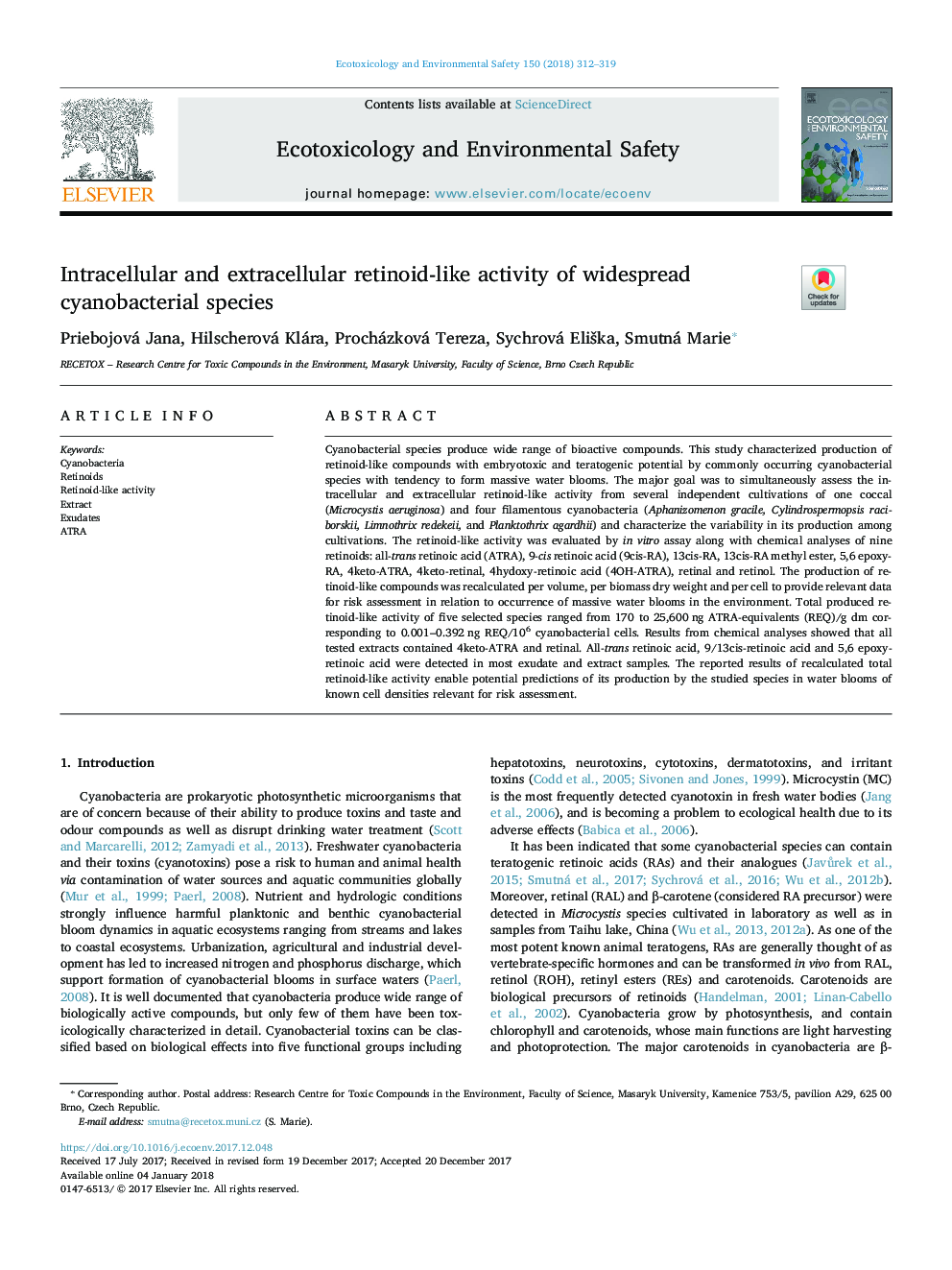| Article ID | Journal | Published Year | Pages | File Type |
|---|---|---|---|---|
| 8854392 | Ecotoxicology and Environmental Safety | 2018 | 8 Pages |
Abstract
Cyanobacterial species produce wide range of bioactive compounds. This study characterized production of retinoid-like compounds with embryotoxic and teratogenic potential by commonly occurring cyanobacterial species with tendency to form massive water blooms. The major goal was to simultaneously assess the intracellular and extracellular retinoid-like activity from several independent cultivations of one coccal (Microcystis aeruginosa) and four filamentous cyanobacteria (Aphanizomenon gracile, Cylindrospermopsis raciborskii, Limnothrix redekeii, and Planktothrix agardhii) and characterize the variability in its production among cultivations. The retinoid-like activity was evaluated by in vitro assay along with chemical analyses of nine retinoids: all-trans retinoic acid (ATRA), 9-cis retinoic acid (9cis-RA), 13cis-RA, 13cis-RA methyl ester, 5,6 epoxy-RA, 4keto-ATRA, 4keto-retinal, 4hydoxy-retinoic acid (4OH-ATRA), retinal and retinol. The production of retinoid-like compounds was recalculated per volume, per biomass dry weight and per cell to provide relevant data for risk assessment in relation to occurrence of massive water blooms in the environment. Total produced retinoid-like activity of five selected species ranged from 170 to 25,600â¯ng ATRA-equivalents (REQ)/g dm corresponding to 0.001-0.392â¯ng REQ/106 cyanobacterial cells. Results from chemical analyses showed that all tested extracts contained 4keto-ATRA and retinal. All-trans retinoic acid, 9/13cis-retinoic acid and 5,6 epoxy-retinoic acid were detected in most exudate and extract samples. The reported results of recalculated total retinoid-like activity enable potential predictions of its production by the studied species in water blooms of known cell densities relevant for risk assessment.
Related Topics
Life Sciences
Environmental Science
Environmental Chemistry
Authors
Jana Priebojová, Klára Hilscherová, Tereza Procházková, EliÅ¡ka Sychrová, Marie Smutná,
